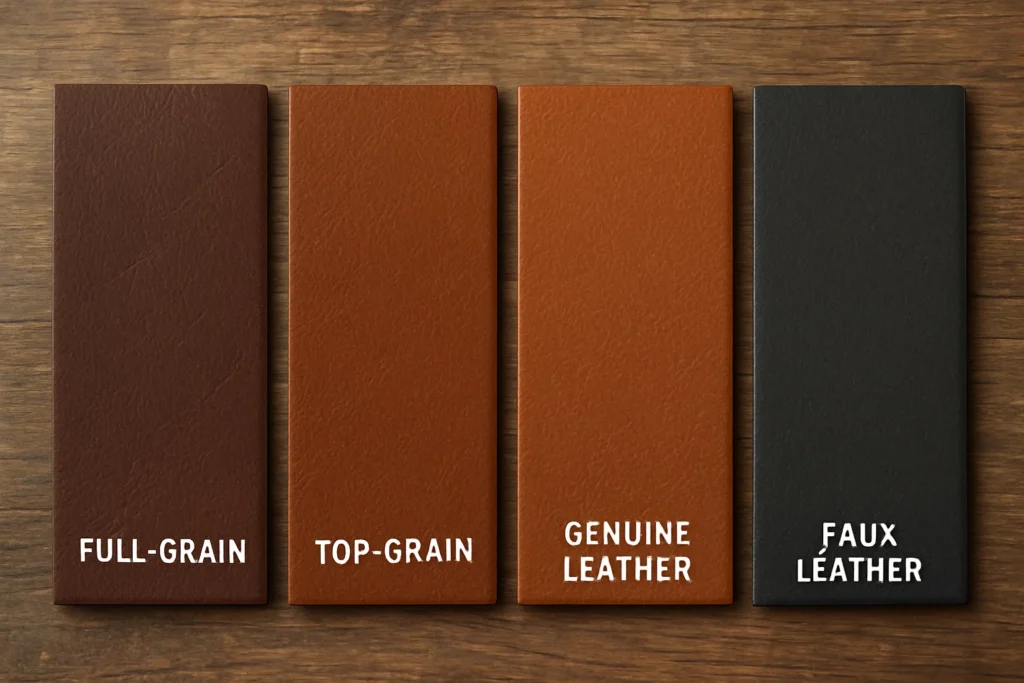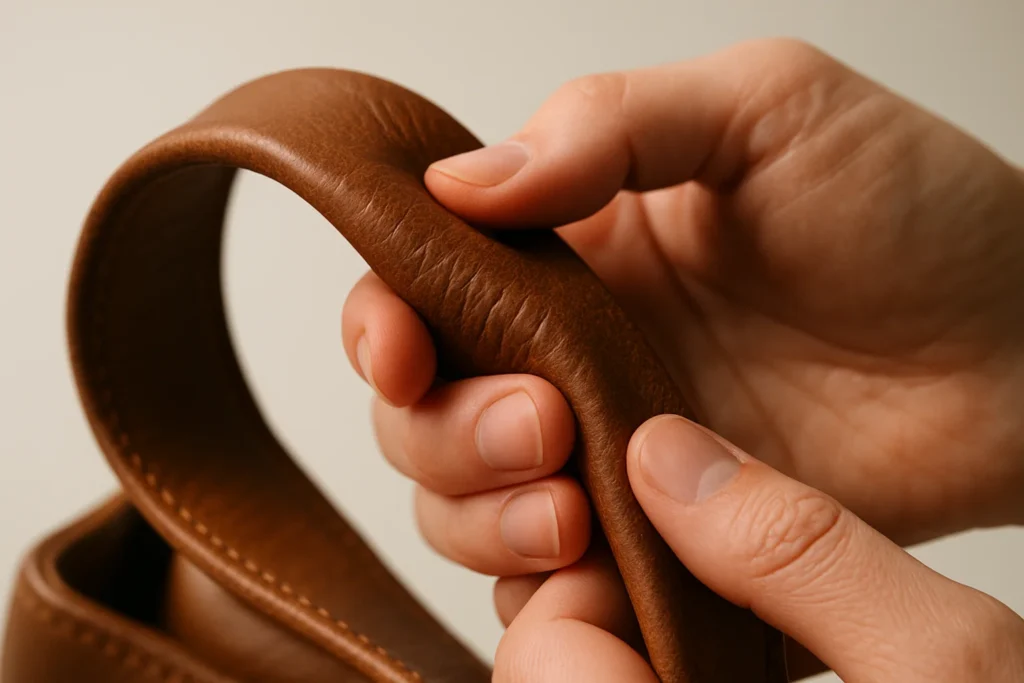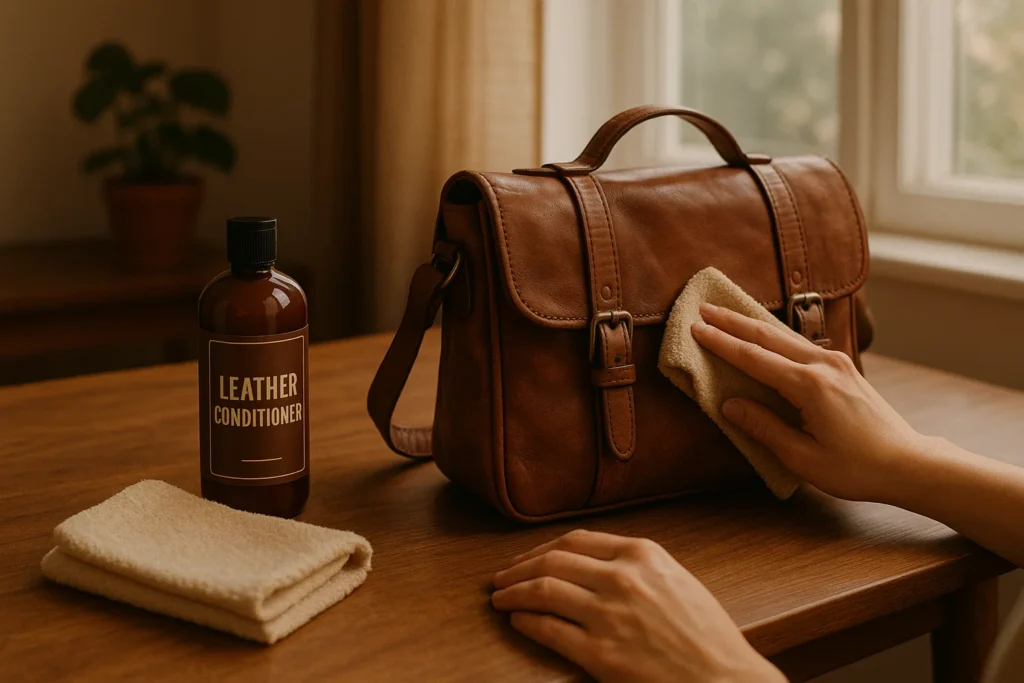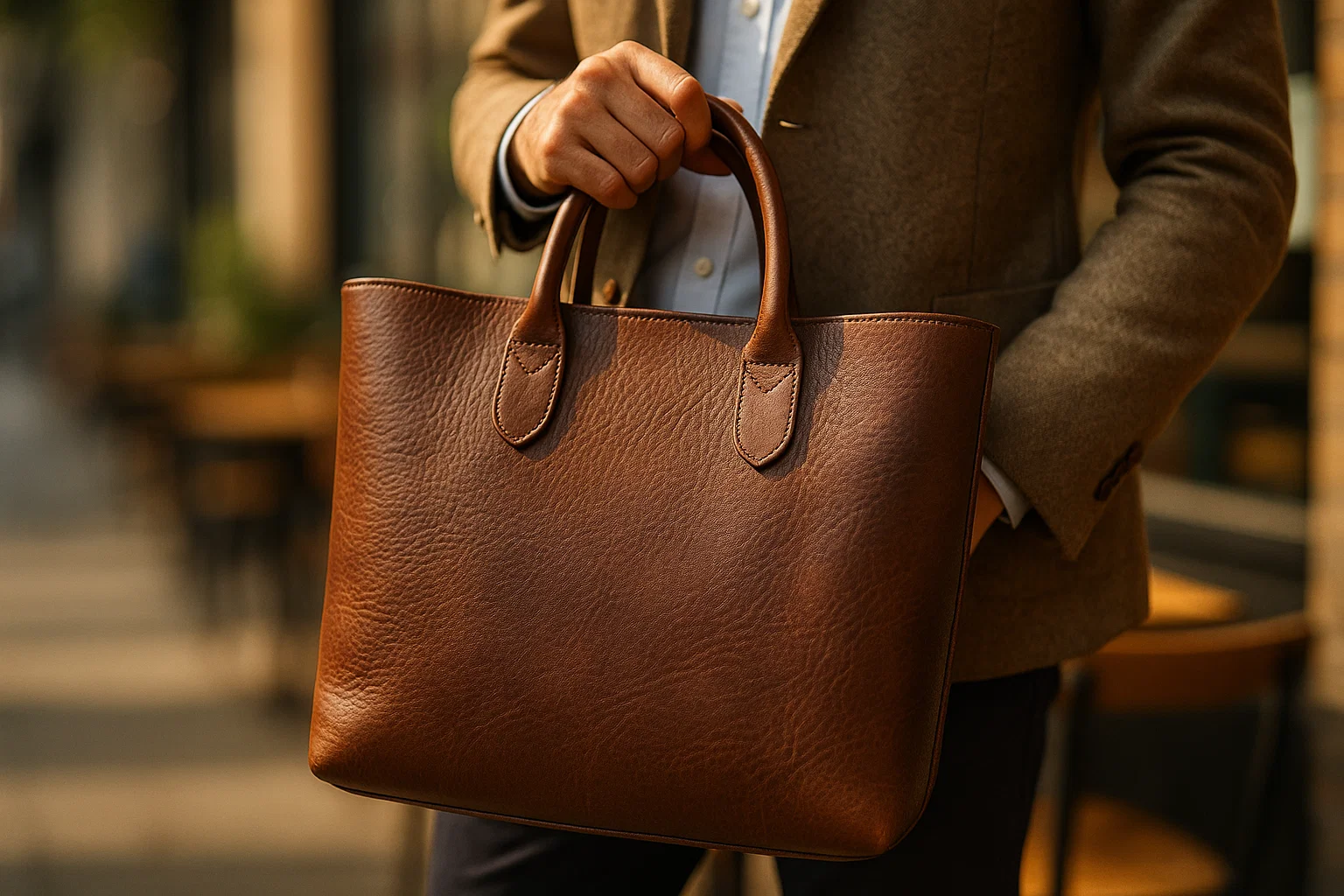Hey there, fellow leather-lover!
Ever walked into a store, spotted a sleek leather bag calling your name, only to realize later it wasn’t “real leather” but a glorified plastic imposter? Yeah, been there, regretted that. Buying a leather bag—whether it’s a satchel, tote, crossbody, or good ol’ backpack—can be an investment. And like with any investment, it pays to know what you’re actually getting.How to Spot a Quality Leather Bag
In this guide, I’m breaking down everything I’ve learned (through trial, error, and sniff tests) about spotting a quality leather bag. No boring jargon. Just real tips, personal insights, and a dash of humor to make it easy to digest.How to Spot a Quality Leather Bag
Let’s get into the good stuff.
The Leather Lowdown: Why Quality Matters
Let’s get one thing straight: all leather is not created equal. There’s a vast difference between top-grain Italian leather and that knock-off stuff that starts peeling after three months of casual use.How to Spot a Quality Leather Bag
A quality leather bag isn’t just about aesthetics—it’s about:
- Longevity: A good leather bag can outlive your dog. Seriously.
- Style: Real leather ages like wine. The patina it develops over time is chef’s kiss.
- Scent: Yes, the smell of real leather is intoxicating (and not just to weirdos like me).

Types of Leather You Need to Know
Before you even touch the bag, know the types of leather commonly used. It’s like dating—once you know the red flags, you stop wasting time.How to Spot a Quality Leather Bag
Full-Grain Leather
This is the best of the best. It’s the outermost layer of the hide and has all the natural imperfections and toughness. No sanding, no tampering—just raw, rugged beauty.How to Spot a Quality Leather Bag
Pros:
- Super durable
- Develops a beautiful patina
- Smells amazing
Cons:
- Pricey
- Takes time to soften
Top-Grain Leather
The second-best. It’s been sanded down to remove imperfections, making it smoother and more uniform.
Pros:
- Still great quality
- Slightly cheaper than full-grain
- Easier to maintain
Cons:
- Less durable
- Doesn’t age as well
Genuine Leather (the biggest trap)
Sounds fancy, right? Nope. It’s actually the lowest quality real leather. Scraps glued together with chemicals and painted over.How to Spot a Quality Leather Bag
Pros:
- Cheap
Cons:
- Peels
- Cracks
- Doesn’t last
Faux Leather aka PU Leather
Plastic pretending to be leather. Don’t fall for it unless you’re vegan and intentionally choosing cruelty-free options (which is totally valid, but a different ball game).How to Spot a Quality Leather Bag

The Touch Test: Feel It Out (Literally)
Alright, let’s get hands-on. When you’re checking out a leather bag, get touchy-feely. Here’s what to look for:How to Spot a Quality Leather Bag
Soft but Firm
Quality leather is soft, but still has some resistance. It shouldn’t feel plastic-like or overly smooth (red flag!).How to Spot a Quality Leather Bag
Grainy Texture
Full-grain and top-grain leather will have an uneven, natural texture. If it’s too perfect, it’s probably fake or over-processed.How to Spot a Quality Leather Bag
Bends, Not Cracks
Gently bend a part of the bag. Real leather should wrinkle slightly—like human skin. If it cracks or feels stiff, that’s either low-quality or faux.How to Spot a Quality Leather Bag
The Sniff Test: Trust Your Nose
Smell is a powerful tool. And yes, this is a legit method.
Real leather has that deep, musky, earthy aroma. It smells like… well, leather. Fake leather often smells like chemicals or plastic. If it reminds you of a dollar store raincoat, back away slowly.How to Spot a Quality Leather Bag
Check the Edges (Where Quality Hides)
Ever noticed how a bag’s edges are sealed or finished?
Real Leather
- Edges may look rough but refined
- They’re usually stitched and sealed properly
- The fibers may be visible and natural-looking
Fake or Cheap Leather
- Smooth, rubbery edges
- Often painted over to hide roughness
- Looks too perfect (again, beware perfection)
Stitching & Construction: It’s All in the Details
Poor stitching is like cheap makeup—it can ruin even the best base.
What to Look For:
- Even Stitching: No loose threads or crooked lines.
- Strong Thread: Waxed nylon or polyester is best.
- Double-Stitched Stress Points: Like where the handle meets the bag.
- No Glue Marks: Glue screams shortcut manufacturing.
Take a peek inside too. If the inside is just as carefully constructed as the outside, you’ve found a gem.
Hardware That Doesn’t Quit
Zippers, buckles, rivets, clasps—these little guys carry a lot of weight (literally and figuratively).
Signs of Quality Hardware:
- Solid Metal: Not flimsy or hollow
- Smooth Zippers: If it snags now, it’ll break later
- Matching Metal Tones: Gold-tone here, silver-tone there? Nope. That’s a no-go.
Lining: The Hidden Truth
Lining is often overlooked, but it tells you a lot.
Signs of Good Lining:
- Durable Fabric: Think canvas, cotton, or leather-lined
- Clean Finish: No hanging threads or uneven fabric
- Firmly Attached: Tug lightly to check—it shouldn’t pull away
Avoid cheap polyester linings with loud prints (unless that’s your thing). Quality bags usually have subtle, clean interiors.How to Spot a Quality Leather Bag
Brand Reputation Matters (But Doesn’t Always Guarantee Quality)
Big brands like Coach, Fossil, or Saddleback Leather generally offer good quality. But don’t be fooled by logos alone.How to Spot a Quality Leather Bag
Check For:
- Transparency: Do they tell you what type of leather they use?
- Reviews: Trust real people, not bots or influencers paid in handbags.
- Return Policy: Quality brands back their products with solid return policies.
Price vs. Quality: What Should You Pay?
Let’s not lie—good leather bags aren’t cheap. But that doesn’t mean the most expensive one is the best either.How to Spot a Quality Leather Bag
Here’s a rough guide:
- $200–$400: Decent entry-level full-grain or top-grain bags
- $400–$1000: Premium brands, custom designs, artisanal quality
- $1000+: Luxury market (you’re paying for craftsmanship and brand name)
If someone’s selling a “100% leather” bag for $49, run.
Country of Origin: Does It Matter?
Short answer: yes, often.
Countries known for leather craftsmanship:
- Italy 🇮🇹 – Home of buttery-soft, artisan leather
- USA 🇺🇸 – Tough, rugged leather (think Saddleback)
- Argentina 🇦🇷 – Great leather + affordable
- India 🇮🇳 – Varies from poor to amazing—depends on the brand
Avoid mass-produced factory bags from countries that prioritize volume over quality. (You know the ones.)How to Spot a Quality Leather Bag
Patina = Personality
Let’s talk about one of the biggest perks of real leather: the patina. Over time, full-grain leather darkens, shines, and molds into a unique look. It’s like the bag is aging with you.How to Spot a Quality Leather Bag
If your bag looks exactly the same after two years of use, it’s probably plastic.
Tips for Spotting Fake Leather Online
Buying online? Oh boy, here’s where it gets dicey. But don’t worry—I’ve got some tricks.
1. Zoom Into Product Photos
Look for texture. Real leather won’t be totally smooth. If the surface looks like vinyl or plastic, it probably is.
2. Check the Description
Words like:
- “PU leather”
- “Vegan leather” (great for ethics, not leather quality)
- “Bonded leather”
mean it’s not full-grain or top-grain.
3. Ask Questions
Contact the seller and ask what type of leather it is. If they say “real leather” without clarification, be suspicious.
4. Read Reviews (Especially the Bad Ones)
If several reviews mention flaking, cracking, or “smells weird,” skip it.
Real-Life Lessons: My Leather Mistakes (So You Don’t Repeat Them)
Story time.
I once bought a beautiful “leather” tote from a hip pop-up store in Shoreditch. It was sleek, soft, and smelled… off. But I was in love. Three months later, the straps started peeling like old wallpaper. I cried (a little), then did my research.
Now, I only buy full-grain or top-grain leather from reputable sources—and my current bag? 5 years strong and aging like George Clooney.

Care Tips to Keep Your Leather Bag Glowing
Once you’ve scored your quality bag, treat it right:
- Condition every 6 months: Use a leather conditioner (not olive oil, please).
- Avoid water: Leather hates rain. Use a leather protector spray.
- Store properly: Keep it in a dust bag, not a plastic bin.
- Don’t overstuff: Stretching ruins the shape.
Final Thoughts: Sniff, Touch, Inspect, Ask
So there you have it—How to Spot a Quality Leather Bag without needing a fashion degree or magnifying glass. The best bags tell stories, hold memories, and last decades. Whether it’s a daily tote or a weekend satchel, you deserve something that looks great and holds up.
Next time you go bag shopping, take your time. Sniff it, touch it, bend it, scrutinize the stitching—and if the price feels too good to be true, it probably is.
Happy leather hunting, my friend.


[…] U should also watch How to Spot a Quality Leather Bag […]